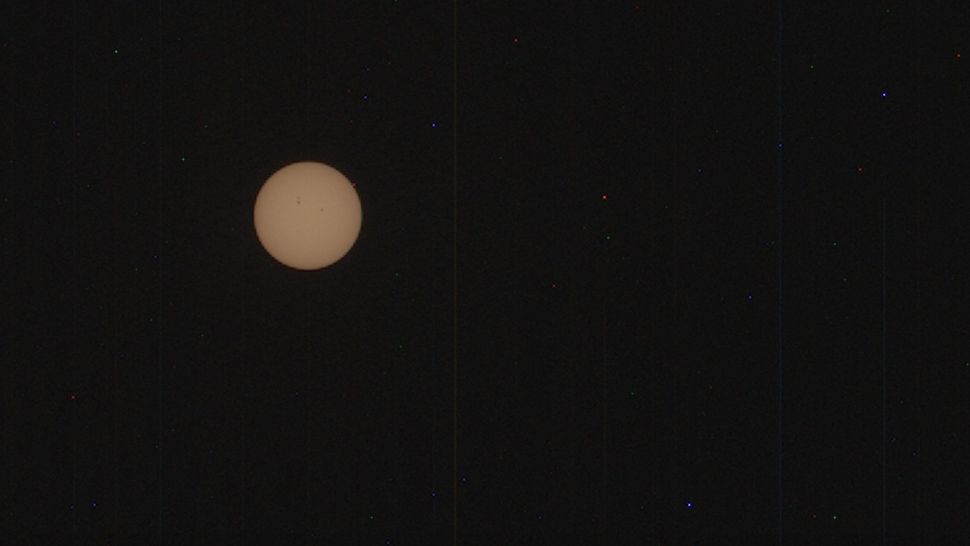NASA's Perseverance Mars rover has captured images of a large sunspot rotating toward Earth. The sunspot, which is about the size of the state of Texas, was photographed by the rover's Mastcam-Z camera system on August 20, 2023.
 |
| NASA's Perseverance Mars rover captured this image of a sunspot (bottom center of solar disk) on Aug. 20, 2023. (Image credit: NASA/JPL-Caltech/ASU) |
Sunspots are relatively cool and dark areas on the sun's surface. They are caused by the concentration of magnetic field lines. Sunspots can sometimes produce solar flares, which are powerful bursts of radiation. Solar flares can disrupt radio communications and damage satellites.
The sunspot that Perseverance photographed is not expected to produce any major solar flares. However, it is still important to monitor the sunspot's activity.
Perseverance is currently exploring the Jezero Crater on Mars. The crater is thought to have once been home to a lake, so Perseverance is searching for signs of ancient life. The rover is also collecting samples of Martian rock and soil that could be returned to Earth for further study.
In addition to its primary mission, Perseverance is also taking pictures of the sun. These images help scientists to track the sun's activity and to forecast potential solar storms.
The sunspot that Perseverance photographed is a reminder of the importance of monitoring the sun. The sun is a dynamic and unpredictable star, and its activity can have a significant impact on Earth. By monitoring the sun, scientists can help to protect us from the harmful effects of solar storms.
 |
| NASA's Perseverance Mars rover captured this image of several sunspots on Aug. 17, 2023. (Image credit: NASA/JPL-Caltech/ASU) |



0 Comments